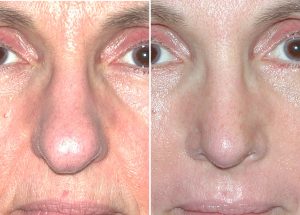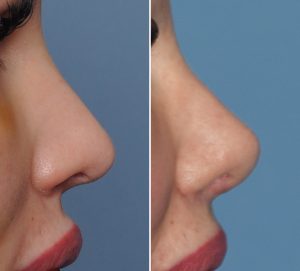
One important aesthetic feature of the nasal tip is the nasolabial angle. As the angular relationship between essentially the columella of the nose and the upper lip (technically it is a line drawn through the midpoint of the nasal aperture and a line drawn perpendicular to the Frankfort horizontal while intersecting the subnasale…but let’s not get too specific), it is a measure of the aesthetics of nasal tip projection. Textbooks and journal articles are replete with this anthropometric facial angle which is commonly stated as being pleasing if it lies between 90 and 110 degrees. But a 20 degree span in the nasolabial angle is a huge range which in any patient can make for a nasal tip that is too low or too high.
In the March 2012 issue of Plastic and Reconstructive Surgery, a study out of Cleveland Ohio evaluated the nasolabial angle and what its ideal range should be. Photographs of twenty patients were studied by changing their nasolabial angles on Photoshop over six different angles including 90, 94, 98, 102, 106 and 100 degrees. Sixteen raters determined which nasolabial angle was most aesthetically pleasing for each patient. The study found that the ideal male nasolabial angle was roughly 96 degrees for men and 98 degrees for women. Based on standard deviations, they concluded that male nasolabial angle are in the range of 93 to 98 degrees and women between 95 and 100 degrees.

While no patient comes in asking for a specific change in their nasolabial angle as part of their rhinoplasty, the up and down position of the nasal tip is important to them. Realizing that the ideal range of the nasolabial angle is less obtuse than previously described will help avoid an overrotated nasal tip which is a more difficult problem to correct secondarily than an underrotated one.
Dr. Barry Eppley
Indianapolis, Indiana


